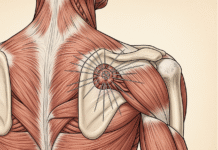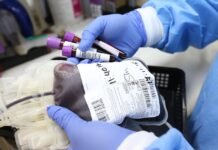You’ve probably heard the term “cold chain” before. But do you completely understand what it is and what it means to sensitive assets? If you’ve had a vaccine recently or if someone you know has received an organ transplant, you’ve been at the very end of a cold chain process. This critical process ensured that the vaccine you received and the organ that was transplanted was in the best possible condition along its journey from start to finish. In this article, we’ll define the cold chain and explore ways it can be maintained to preserve quality control of the perishable items that a consistent cold chain is meant to protect and preserve.
What Is Cold Chain?
The cold chain is more of a reference term than anything else. It’s used in the healthcare industry to describe maintaining consistent temperatures for such sensitive items as vaccines, certain medications, blood, and organs. These temperatures must remain consistent from the moment these items are manufactured or collected through to their delivery to healthcare facilities.

Why Is Cold Chain So Important?
The cold chain process involves contact with several different stakeholders. As these stakeholders transport, store, or distribute the assets through the cold chain process, the optimal temperature to preserve these items is monitored and maintained. The safe temperature range to prevent loss of these items is normally between 2C and 8C. Basically, a consistent environment for these assets assures their preservation, safety, and future viability.
What Happens If The Temperatures Change?
Slight variations in cold chain temperatures are expected. As long as they don’t exceed the optimal range, there will be no damage. However, should the temperatures vary beyond the acceptable range, those vaccines, medication, blood, or organs may become completely unusable.
Examples of the kinds of damage that could occur with an inability to maintain cold chain temperatures include:
– Formula degradation (in vaccines, particularly)
– Spoilage and product waste (plus money waste)
– Loss of potency (rendering the products unusable)
– Need to replace failed assets (cost of time and money)
Where Cold Chain Storage Is Used Most
Cold chains are commonplace in two main industries – the healthcare (pharmaceutical) and food industries. The cold chain differs from fresh produce cargoes–temperatures must be much cooler for cold chain transportation and distribution. Because of how important it is to maintain consistent temperatures in cold chain activities, companies must meet specific guidelines based on the product or asset’s cold storage requirements. And those requirements are heavily regulated and controlled to ensure that sensitive items stay in optimal condition by the time they arrive at their destination.
How to Prevent Failure Within the Cold Chain
There are several ways to ensure your products or assets stay safe in your cold chain process and avoid the negative consequences of a break in the cold chain. Here is a closer look at three key elements that will help you maintain the required cold chain quality control levels.
1 – Identify Your Needs and Risks
Part of the success of cold chain operations is the ability to have a complete picture of what happens as sensitive assets pass from one location to another. In a warehouse setting, which could be at the beginning, middle, or end of the process, it’s vital to ensure that not only is there sufficient space to store shipments of products requiring temperature monitoring but that the entire space is at the right temperature. By tracking the normal flow of products in the cold chain and the volume of those assets at all times of the year, you can design your warehouse to accommodate this. Vehicles used to transport the vaccines, meds, blood, or organs must also have refrigeration units that are always well-maintained and operating correctly during transportation. Having extra equipment available should a problem arise reduces the risks associated with changes in temperature that could damage stock and inventory.
2 – Train and Re-Train Your Personnel
It cannot be stressed enough how important it is to have staff that knows what they are doing when on the job. This requires hiring the right people and training them for their specific roles in the operation. It also means re-training them when necessary to keep their skills current. You cannot have untrained staff involved in cold chain activities. The nature of these sensitive items dictates that staff members who come in contact with them during the transportation, storage, or distribution phases must know exactly how to properly handle assets and know how to respond if they identify an issue. With the right people in place with the proper training, your part in the cold chain will ensure safe handling of any products that pass through your company’s staff, warehouse, or vehicles.
3 – Have A Thorough Monitoring Strategy
With temperature-sensitive assets, maintaining a central system that tracks well and allows quick responses to temperature fluctuations is essential. New technology can lend a huge hand here. Physically monitoring temperatures is no longer good practice; electronic monitoring tools are far more reliable, accurate, and are impervious to conditions. For example, a data logger can sit in a warehouse and record temperatures 24/7/365 and send out alerts if it detects a temperature fluctuation. This permits a quick response and human intervention to correct the problem before those sensitive items can spoil. This saves money in the long run and does not interrupt the cold chain process. Dickson notes that a remote monitoring system that tracks a network of cloud-enabled data loggers provides numerous advantages for cold chain operations.
In Conclusion
When dealing with perishable items such as vaccines, blood, medications, and organs, you must maintain a constant storage and transportation temperature—it’s essential to the lifespan of these assets as they travel through the cold chain to their destination. To ensure this, several methods and tools can be used. Understanding the risks, being prepared to handle them, having trained staff, and using monitoring equipment—all make it far easier to protect sensitive assets as they travel from Point A to Point Z.


























